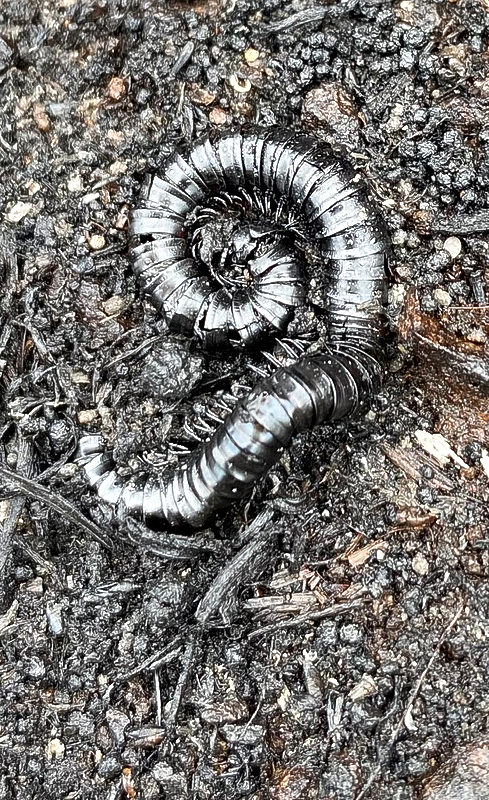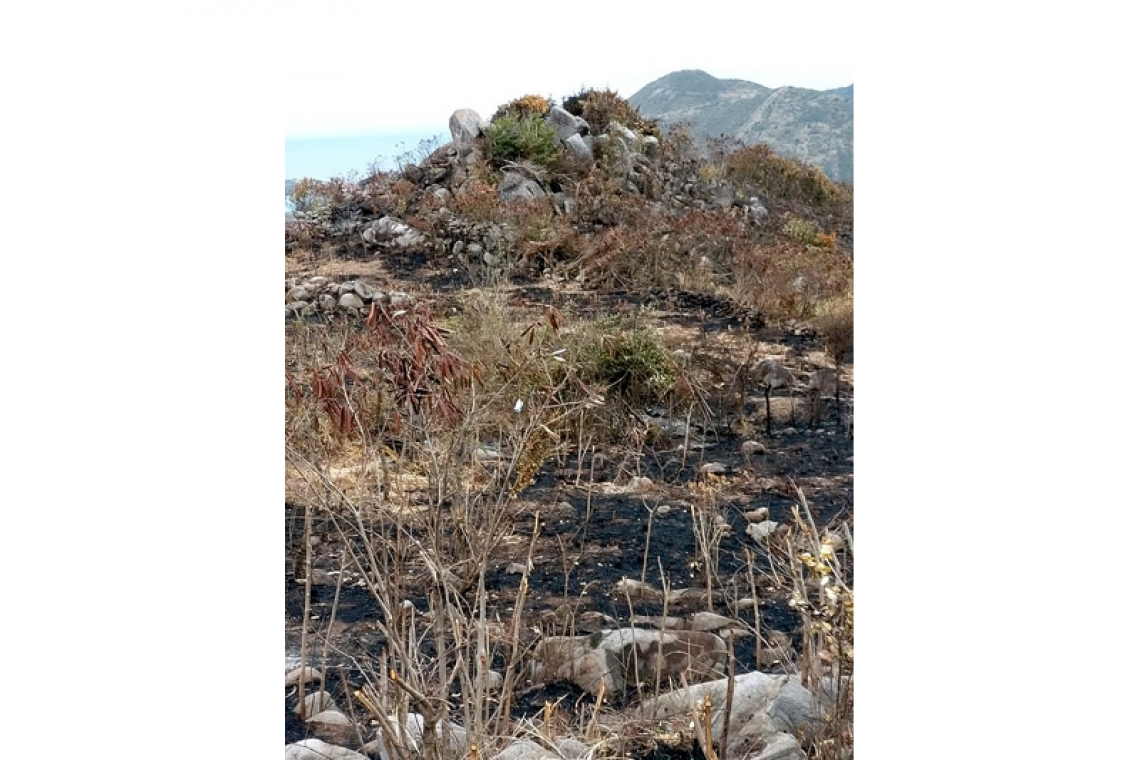Burned and scorched vegetation at the top of the Middle Region hill.
MIDDLE REGION--According to an environmental impact survey conducted by St. Maarten Nature Foundation last week, the bush fire on the Middle Region hill burned through almost 180,000 square metres of vegetation and significantly affected local wildlife.
The fire started early Monday night, April 20, and was not fully extinguished until Tuesday, April 21. The blaze threatened several homes in Middle Region and Sucker Garden, but it ended with no loss of life or damage to property.
In the days after the fire, St. Maarten Nature Foundation Chief Ranger Etienne Lake and David Bardfield of the St. Maarten Volunteer Corps VKS hiked up the hill to assess the affected areas and the fire’s environmental impact.
Using an aerial drone, Lake and Bardfield determined that the fire burned or scorched at least 177,372 square metres of vegetation, most of which was covered with wild-growing tamarind trees, native grasses and cacti.
Several animals died as a result of the fire, including mongoose, lizards, iguanas, various bird species, snails, spiders and other insects.
“In addition to the loss of life from the event, animals that are normally found in the area often flee after a bush fire and cannot return for some time due to lack of food in the region.
“The bush fire significantly damaged the native vegetation and wildlife of St. Maarten, decreasing our biodiversity. … St. Maarten’s native vegetation and wildlife were already greatly reduced and are under significant threat due to development and construction. We urge all residents to be very careful with burning any items, especially during dry periods,” said the Nature Foundation in a press release on Thursday.
However, there are also indications that animal life is surviving in the region, said the Nature Foundation. The assessment team reported that they saw a mongoose, two doves, a lizard, and several ants in the area.
“Bush fires are not only negative, [because – Ed.] bushfires can trigger new germination … and encourage new growth that would not have been possible with the dense vegetation already in place,” said the Nature Foundation.
The foundation thanked the St. Maarten Fire Department, the St. Maarten Police Force KPSM and residents in the area for their efforts at containing the blaze.
“There were no human fatalities due to the fire which, if not contained, could have spread to several densely populated areas nearby. The Nature Foundation will continue to monitor the area in the coming weeks and hopes to see regeneration in a short time period,” said the foundation.

The charred exoskeleton of a centipede that perished in the bush fire.







